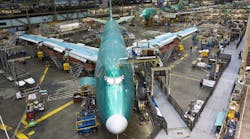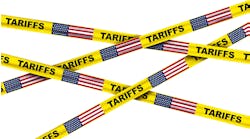The U.S. manufacturing sector just batted 5-for-5 in its version of spring training.
Since mid-2014, the collapse in oil prices has hit manufacturers tied to the energy industry while the rise of the U.S. dollar was broadly crimping activity. These headwinds are no longer strong enough to dim Goldman Sachs Group Inc.’s “near-term optimism” on U.S. manufacturing.
Regional surveys on the state of factories in the Philadelphia, New York, Richmond, Kansas City, and Dallas Federal Reserve districts all showed marked improvement in March. This uptick in activity prompted Goldman Analyst Elad Pashtan to wonder whether the U.S. manufacturing sector had “turned a corner.”
The aggregate improvement in these regional Fed surveys, he observed, constituted the largest one-month jump on record. The upturn in these surveys is supported by such other metrics as railcar volumes, trucking activity, and seaborne container traffic, according to the analyst.
Goldman projects that the ISM Manufacturing Purchasing Managers Index will break above 50, the level that separates contraction and expansion, in its March reading that’s due out on Friday.
“Nevertheless, any manufacturing recovery is likely to be fragile, as risks from slowing auto sales and further dollar appreciation may derail the recovery,” Pashtan cautioned.
Commenting on the better-than-expected regional manufacturing numbers and recent housing data, Neil Dutta, head of U.S. economics at Renaissance Macro Research, highlighted what he deemed to be the weirdest relationship in economics: The apparent divorce between U.S. economic-surprise indexes, which have largely been on fire since early February, and the coincident decline in the Atlanta Fed’s model for first-quarter gross domestic product.
“Survey measures of activity are less volatile and subject to revision than hard data such as core durables and retail sales. They are also more timely,” Dutta concluded. “This is why we see some chance that growth momentum heading into the second quarter improves.”
By Luke Kawa




